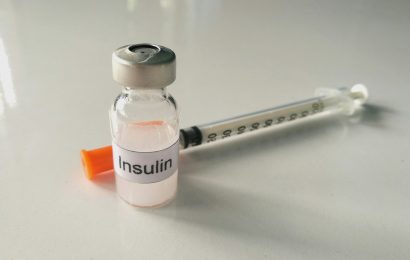Spring is here, and in a matter of weeks, summer arrives. With the coming of warmer weather, thoughts often turn to one’s weight, whether it’s the dread of trying on a bathing suit or the desire to simply be able to get out and enjoy the weather without huffing and puffing. But as most of us know, losing weight is tricky — not impossible, but tricky. Anyone can jump on the fad diet bandwagon and drop a few pounds. The challenge lies in keeping it off. Raise your hand if you’ve struggled with keeping off lost weight!
Maybe it’s time to break the cycle of losing and then regaining. Or maybe it’s time to focus less on the actual amount of weight to lose and instead, focus more on the benefits that you can derive from losing just a small amount of weight. Don’t get me wrong. Losing any amount of weight can be hard for some people. But rather than dwelling on how much weight you have to lose or how it will take forever to lose 50 pounds, why not set your sights on what really matters: better quality of life, improved diabetes numbers, sounder sleep?
Enter 5–10%
Some of you might have heard of these two major studies: the Diabetes Prevention Program (DPP) and the Look AHEAD trial. DPP’s goal was to see what helped people at risk for Type 2 diabetes not get it. Look AHEAD is a study (still ongoing) that looks at the long-term effects of a lifestyle intervention program designed to achieve and maintain weight loss. Both of these studies — and others — showed that losing between 5% and 10% of body weight yielded some pretty impressive results. Here’s what you might expect from this amount of weight loss:
• Improved glucose tolerance and less insulin resistance: In the case of the DPP, this meant prevention of diabetes. For those in the Look AHEAD trial, this meant better blood glucose levels and lower A1Cs.
• Lower triglyceride levels: Losing 5–10% of weight can lower triglycerides (a type of blood fat) by up to 40 points.
• Lower blood pressure: A 5–10% weight loss lowers blood pressure (both the top and bottom numbers) by 5 points.
• Higher HDL cholesterol: HDL, or good, cholesterol can jump up about 5 points with weight loss. The higher your HDL, the more protected you may be from heart disease.
• Better sleep: People who are overweight are more prone to sleep apnea. A small amount of weight loss (5–10%) can improve sleep apnea and help you sleep better.
• Less inflammation: Excess weight can raise inflammation in the body, which means a higher risk for heart attack and stroke. Weight loss can lower markers of inflammation.
How do you lose 5–10% of your weight?
What does 5–10% of weight loss even look like? Well, it depends on what you weigh. Let’s say you weigh 200 pounds. Five percent of 200 is 10, so a 5% weight loss, then, is 10 pounds. If you’re feeling a little more ambitious, you might aim for a 20-pound weight loss, which is 10%. Keep in mind we’re not talking about 50 or 100 pounds here. Here are some tips to get you started:
• Make small changes. Think about where you can make easy but meaningful changes in your life. Can you walk for 10 minutes at lunchtime every day? Can you swap a snack of chips for a piece of fruit?
• Eat better. Skip the starvation diets and think Mediterranean: fish, poultry, whole grains, vegetables, beans, healthful fats.
• Move more. Find a type of physical activity that you like to do (or have always wanted to try). Walking is a great way to get started, by the way. Start off slowly and gradually build up.
• Talk with your health-care team. Get their support and also let them know that you’re aiming to make some improvements in your health. You may eventually need to make changes in your diabetes or blood pressure medicines as you lose weight.
• See a dietitian or join a program. If you need more structure or guidance, working with a dietitian or joining a weight-loss program (including a commercial program like Weight Watchers) can be very helpful and help you make better food choices.
• Use technology. Wear a pedometer. Use a smartphone app to track your physical activity or your food intake. Doing so helps you see what you’re actually doing and where you might need to make changes. Plus, apps can help hold you accountable.
• Weigh yourself regularly. You don’t need to weigh yourself every day, but try to do so at least once a week. Choose the same day and time to weigh yourself.
• Find support. Maybe your spouse, a family member, or a friend can join you in your efforts. It’s easier to stick to something when you know others are right along with you. If that’s not possible, try joining an online support group.
In a matter of a few weeks to a few months, the above changes will start to pay off. After about 6 months, it’s time to regroup and decide your next course of action. Will it be another 5–10%? Maybe!




